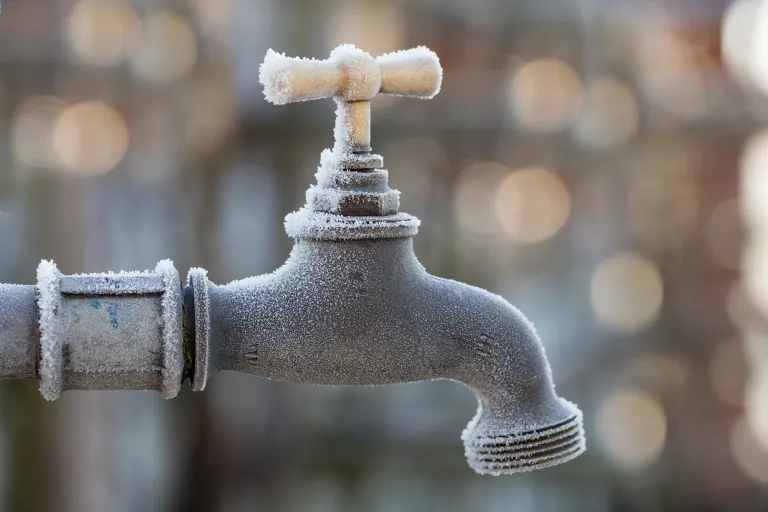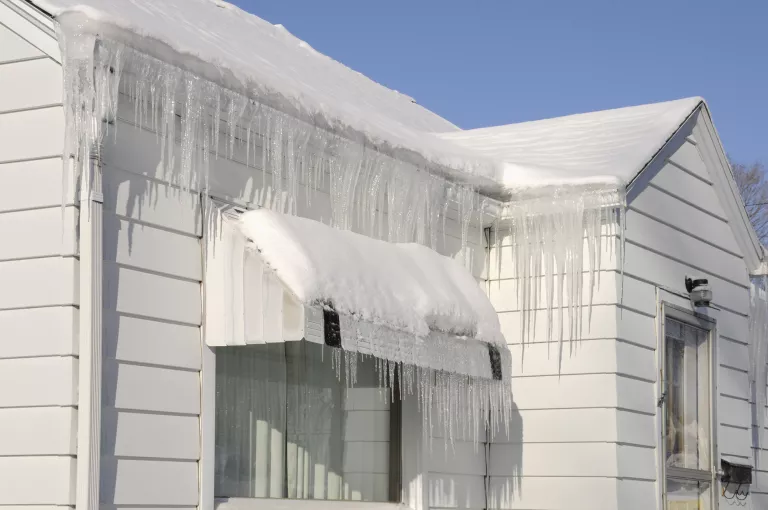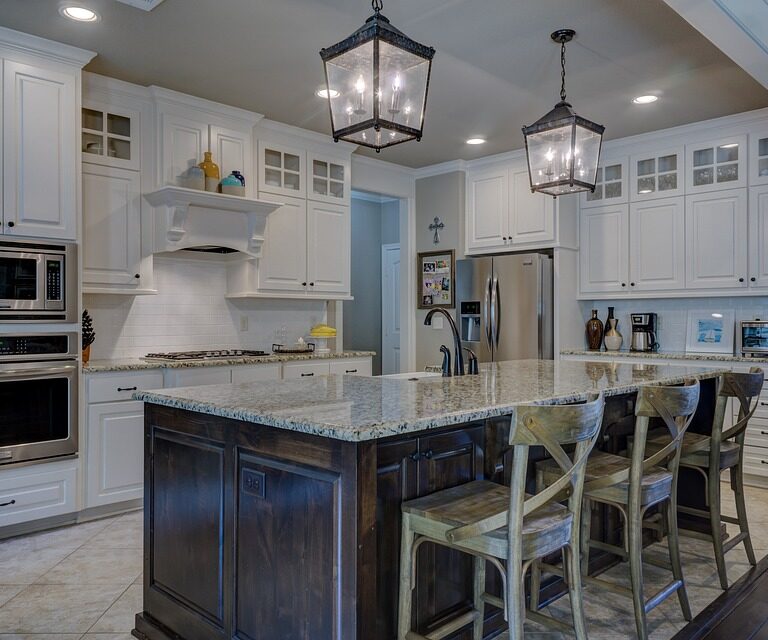10 ways to winterize a house – get your home ready for winter
Knowing how to winterize a house is essential in keeping your home warm and dry during the winter season; it will also spare you from potentially costly and catastrophic problems later on.
Not only would winterizing a house save potential problems and, dare we say, disasters, but it may also be a project – or set of jobs – you want to add to your list of eco-home improvements. Furthermore, several of them might assist you in lowering your energy expenditures.
‘When it comes to winterizing a house, it’s always better to be cautious than sorry,’ says Phil Wood, country manager at Contura. ‘There’s nothing worse than dealing with a leaking window, busted pipe, damaged boiler, or broken stove in the dead of winter.’ We naturally spend more time indoors during cold, wet weather, and our homes must be well-equipped to comfortably get us through the winter.’
HOW TO WINTERIZE A HOUSE
There are many reasons to adore fall: the crunchy leaves, the cozy woolen jumpers, and the crackling fireplaces – but it also brings wind, rain, and a dramatic drop in temperature, not to mention the possibility of frosts and snow later in the season. Before the weather changes, it is critical to winterize your home to be ready to meet whatever the weather brings.
1. CHECK THE ROOF

If you do one thing to winterize your home, make it checking the roof. To do this, get out the ladders or stand across the street or at the bottom of the lawn with binoculars and inspect the roof. In either case, if you are concerned, get a roofer to do a comprehensive inspection.
‘Good roof maintenance is critical to avoiding water damage to the fabric of a building.’ Slipped slates or tiles, crumbling leadwork, and debris-clogged roof valleys will all cause disaster if ignored,’ says Roger Hunt, editor of the Old House Handbook.
When inspecting your roof, verify that all tiles are securely fastened and that any missing is noted. Examine the flashing, ridges, and joints to verify there are no gaps for water to enter. Look for any roof debris on the ground; Inspect the loft for damp spots, chinks of light, and loose tiles.
‘Roofs should be repaired as soon as possible by an experienced roofer. ‘Never employ quick fixes like spray foams or liquid waterproofing since they may trap moisture, impede repairs, and are likely to restrict future reuse of components,’ Roger says. Removing moss and leaves from the roof is also critical since these will collect water and cause dampness and damage.
Roofing upgrades are best done in the summer when you have a better chance of dry weather and more options for roofing materials. Meanwhile, fixing any faults that develop will offer a decent temporary remedy.
2. ASSESS YOUR CHIMNEY

Spend some time inspecting the chimney while you’re up on the roof. Being an outward projection from the top, the chimney is particularly susceptible to the damaging effects of house, cold, and snow. Minor cracks should be patched using patching cement or 100% silicone caulk if any problems are discovered. Nonetheless, if the fissures are large, you should probably call in an expert. As part of your efforts to winterize a house, you may want to think about installing a chimney cap or cowl, which will limit downdrafts and increase your stove’s efficiency.
3. INSTALL A CHIMNEY FLUE DRAFT EXCLUDER

According to the Buildings Research Establishment, an uncapped chimney is a functional equivalent of permanently cracking a window. A removable chimney draft excluder, typically felt or wool can help mitigate this problem. The chimney balloon is permanent. However, the excluder can be placed in the fireplace throat and removed when needed. This is a fantastic addition to your winter living room decor because it will prevent 94% of cold air from entering your home.
4. UNBLOCK GUTTERING AND DRAINS

It’s a good idea to clear your gutters and unclog your drains while you’re up on the ladders thinking of ways to winterize a house; doing so will keep water from backing up and soaking the outside walls. While you’re at it, ensure the gullies, downspouts, and gutters are all in good working order. One of the best ways to winterize a house is to clean out the gutters with a gutter brush to prevent the trash from accumulating in the first place.
5. EXAMINE YOUR EXTERIOR WALLS

All exterior housing materials are vulnerable to wet, freezing, or windy weather effects. Because of this, it is crucial to think about this when preparing a home for winter.
If you notice any cracking, rotting, or efflorescence (all indicators of dampness), take temporary measures to fix the water, so it doesn’t get worse. When the weather warms up, a technician can come to resolve these issues.
Cracking, spalling, and structural instability can result from freeze-thaw cycles affecting wet brickwork or unfired earth in cold weather. The exposed features like parapets, copings, cornices, and chimneys are particularly vulnerable. By regulating moisture, damage can be reduced. Douglas Kent, technical and research director at the Society for the Protection of Ancient Buildings, warns against using improper cement mortars and impervious wall insulation since they reduce “breathability.”
6. APPLY WATER REPELLENT TO YOUR BRICKWORK

One technique to manage humidity prevents rain from getting into wood, brick, or stone. According to Gordon Grainger, director at Kingfisher Building Products, “driving rain may soak through masonry over two feet thick in as little as 24 hours.” (A new window will open with this) If your house’s exterior is painted, you should consider repainting using masonry paint that meets a higher quality standard. Applying a high-quality clear water repellent or cream is your best bet if your house is made of unpainted brick or stone. Instead of opting for a do-it-yourself solution, consider investing in a high-quality brand created by a company that supplies the damp-proofing sector. This will guarantee that your repellent is 100 percent breathable and can be used with lime mortar in addition to brick, stone, and wood.
7. DRAFT-PROOF INSIDE AND OUT

Draft-proofing is an easy technique to winterize your house for the winter. Find where the chilly air is getting in, then block it off. The cheapest method is to do it yourself and seal any drafts. Brush draft excluders can be attached to the bottom of doors, or you can buy a cushioned sausage-shaped excluder to lay in front. Letterboxes can also have draft excluders of the brushed variety installed on them.
Add draft-proofing strips to the window frame to seal any cracks and keep the cool air inside. Use a sealant gun or decorator’s caulk to fill the spaces between the flooring and the skirting boards.
A professional can help you draft-proof your house, but their services will be more expensive than if you were to do it yourself.
8. CHECK WINDOWS FOR EFFICIENCY

It’s a good idea to inspect the condition of your windows in the fall. If you can, open them up and make sure they close all the way and flush with the frame. Take note of drafts, sagging or jiggling doors, broken or missing hinges, rotting wood, missing or damaged putty, cracked or peeling paint, and sloppy joints. All of them may be rectified, though some, like rotten wood, may require professional assistance.
Your windows will likely fog up overnight due to the cooler weather outside and the warm air inside. If you want to keep your window frames from rusting or rotting, or if you’re going to keep your paint job in good condition, you should wipe them off every morning. Knowing how to clean windows without leaving streaks is essential if you plan on doing this.
Outside, clean any debris from your window sills to prevent water from accumulating.
9. INSULATE PIPES

The water supply and the pipes’ integrity are only two of the many things that can be negatively affected by pipes freezing over the winter. Freezing water expands, which can cause pipes to burst and water to overflow. Installing foam insulation tubes around exposed pipes or pipes in the attic can help prevent them from freezing during the winter. Be sure to shut off the outdoor water supply at the main valve before the first frost. Knowing how to avoid a faucet outside from freezing is also valuable information to have. When it comes time to winterize a greenhouse, this will be just as helpful.
Turn off the main water supply if you think there may be a problem with the pipes, but leave the faucets open to release pressure as the ice melts. The heating product manager at BestHeating, Andrew Collinge, suggests using a hair dryer or heat gun to melt frozen pipes. Bind the pipe securely with a cloth or heavy-duty tape until a plumber can fix it, but in the meanwhile, use a bucket to catch any leaks.
As the temperature outside drops, the house in your pipes expands, cracks, and can even break if left unchecked.
10. CLEAR SNOW FROM PARAPET

After a blizzard, it’s a good idea to clear the snow from the parapet and valley gutters. Removing snow prevents water from entering into cracks and crevices. Carefully move the snow with wooden or plastic shovels to avoid injury. Gutter snow removal options include duckboards and electric heating tapes. Douglas Kent recommends installing snow guards near eaves to prevent snow and ice from falling and breaking off onto lower roofs, where it could crack and break the glass.
WHEN SHOULD YOU WINTERIZE?
Before the first frost, ideally toward the end of summer/beginning of fall, you should winterize your house. By doing so, you can be confident that the bad weather hasn’t caused any problems.
HOW DO I PREPARE MY PIPES FOR WINTER?
Pipe insulation consists of a split foam tube that slots around the tube and can be used to protect your pipes from the cold during the winter. This applies to both indoor and cold water supply pipes. ‘There should be an interior stopcock so they can be isolated in cold weather,’ suggests Roger Hunt. Hence, it’s important to remember to turn off outdoor faucets when the temperature drops.







